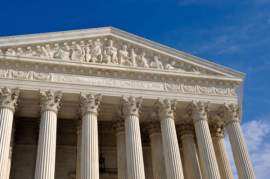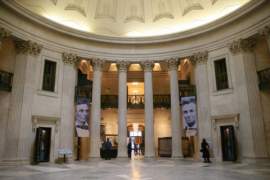
Quick History Overview

Popular In Constitution
Purpose Of Lifetime Appointment And Pros And Cons Enumerated Powers Bicameral Legislature Background Article 3 Of The Constitution We The People 1st Amendment Who Wrote The Constitution Judicial Review Equal Protection Clause Three Fifths Compromise 10th Amendment 5th Amendment
Declaration of Independence
The Declaration of Independence was both the first political and legislative document written in the history of the United States. In addition to the Declaration of Independence establishing the newfound autonomy of the United States of America, the authors of this document - comprised of head author Thomas Jefferson, along with John Adams and Benjamin Franklin - outlined the cruelties and injustices inherent in a monarchical rule. Many historians consider the Declaration of Independence to be the precursor to both the Articles of Confederation, as well as the more functional Constitution of the United States. The egregious treatment from which the citizens of the United States suffered under a perceived tyrannical British rule were cited in the document. By referencing them as unacceptable, the Declaration of Independence ensured the foundation of a democratic nation ruled with the interest of its citizens prioritized over those of the ruling, governmental body.
Movement Towards Constitutional Government
After release of the Declaration of Independence, the Second Continental Congress was in dire need of a new legislative doctrine, which, as per the promise located in the text of the Declaration of Independence, was required to provide a just and democratic legislative process that served its citizens rather than an aristocratic ruling faction. John Dickinson, who was contracted by the Second Continental Congress, constructed the Articles of Confederation to be the new legislature under which the newly-independent nation would be governed.
Although the weak central government outlined in the Articles of Confederation was welcomed initially, the essential powerlessness of the central government proved to be a supremely flawed and disastrous legislative policy. Many people regarded the Articles of Confederation as innately reactionary in nature, perceived to have stripped the central government of all power in favor of sovereign states retaining a majority of it in order to prevent the potential of a totalitarian monarchy from ever surfacing in the United States.
Yet, shortly after its inception, the Articles of Confederation proved to be disastrous, disabling the existence of any nationwide policy due to the fact that each of the 13 states operated as 13 individual sovereign entities. As currency became devalued, tax rates became erratic and an air of dissatisfaction swept the nation. The result was various rebellions and an unwillingness on the part of foreign nations to engage in any sort of relations - both diplomatic, as well as commercial - with the United States.
Federalist Papers
The Federalist Papers were a collection of 85 essays and political abstracts authored primarily by Alexander Hamilton with the assistance of John Adams and John Jay. The goal of the Federalist Papers was twofold: Primarily, the Federalist Papers was a campaign to promote the ratification of the Constitution of the United States. Secondly, the disbursement of the Federalist Papers was a method in which its authors were able to disseminate tenets and precepts expressed in the text of the Constitution to the general public. As a result, the general populace would have the opportunity to educate themselves on the message and meaning expressed in the Constitution, rather than simply allowing for their respective State representatives to decide the validity of it.
The Federalist Papers was a literary proponent in the establishment of a democratic nation, fundamentally opposed to both the methods of the British Monarchy, as well as the methods demonstrated in the Articles of Confederation. Serving as a convergence of ideology that supported the existence of a powerful legislative body whose primary purpose was to serve its citizens, the legislative process proposed in the Federalist Papers would function as a respectable and just ruling body in contrast with both the perceived tyranny of King George III, as well as the assumed ineptitude of the Articles of Confederation.
Constitutional Convention
Although the Constitutional Convention officially convened in 1787 at Independence Hall in Philadelphia, Pennsylvania, the precursor to the Convention is considered to be the Annapolis Convention, in which James Madison arranged a meeting in Maryland in order to discuss a process for the navigation of the Potomac River. After the attendees of the meeting had realized that due to the shoddy legislature outlined in the Articles of Confederation, due in part to each individual State’s sovereignty, establishing a finalized policy for any inter-state matters was needlessly difficult. James Madison suggested that representatives from each of the 13 states of the Union, under the Chair of George Washington, reconvene at Independence Hall the following year. The proposed meeting would be known as the Constitutional Convention.
The goal of the Constitutional Convention was to establish a final version of the Constitution - the legislative document that would supersede the Articles of Confederation - and as a result, would be distributed to each of the individual State legislatures for approval of the document. Prior to its ultimate ratification, the Constitution was subject a variety of disagreements involving issues of State representation, slavery, and the presence of means to create future Amendments.
The Founding Fathers
The Founding Fathers successfully spearheaded the American Revolution through political thought, influential publications, and innovative governing techniques. A group of prominent statesmen, the Founding Fathers unified the American colonies and enlightened the inhabitants to the tyrannous actions of the British Parliament. To alleviate financial burdens caused by war and frivolous spending, the Monarch of Britain instituted a series of unjust levies on consumer staples and non-British imports. In response to such an obscene taxation model, the Founding Fathers led a revolution through varying methods.
Among others, Samuel Adams, Thomas Jefferson and John Adams produced publications which enlightened the common man of Britain’s illegal and immoral governing techniques. Other Founding Fathers, such as Samuel Adams and Thomas Paine, radically formed protests and political groups to further mobilize the American uprising. As the Revolutionary War commenced, the Founding Fathers placed a necessity on solidifying the sovereignty of the United States.
Bill of Rights
The Bill of Rights was the first national doctrine to unequivocally designate freedoms to individual citizens. Ratified in 1791, the Bill of Rights contains the first 10 Amendments of the United States Constitution. Following the Revolutionary War the Articles of Confederation were adopted to establish the governing bodies of the newly found country. Although the legislative doctrine was seen as an improvement to the previous authoritative government, the Articles quickly fell into disfavor due to an unbalanced distribution of power between the central and state governments. Under the Articles, the states retained the majority of power; the central government was inept and the country was horribly fragmented.
At the Constitutional Convention in 1787, the Founding Fathers and State leaders gathered together to amend the Articles and produce a revised document to better stabilize the Federal Government. While at the Convention a rift developed through political banter. Led by Alexander Hamilton, the Federalist Party fervently argued for a fully-functional centralized government equipped with the power to properly tax and enforce a legal code on its citizens. Considering the failure of the Articles, the majority viewed Hamilton’s wishes as appropriate. However, a growing sentiment regarding individual freedoms loomed over the proceedings.
Anti-federalist party members such as George Mason and Patrick Henry voiced their opinions regarding an inclusion of individual liberties within the proposed Constitution. Considering the injustices enforced by Parliament, the Anti-Federalist Party was reticent over supplying the central government with too much power. The Federalist Party viewed such wishes as redundant; Alexander Hamilton argued that individual liberties were inherently offered in the U.S. Constitution. Although the process was lengthy, James Madison (former Federalist Party member) authored the Bill of Rights in 1789 using the Virginia Constitution (written by George Mason) as his platform.



















